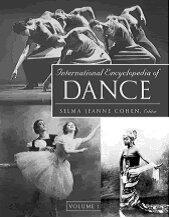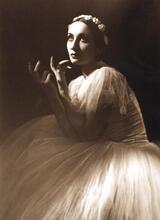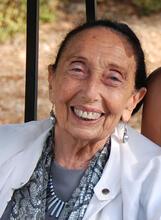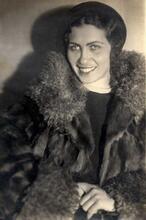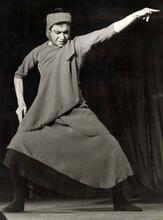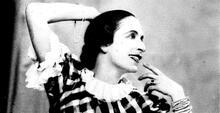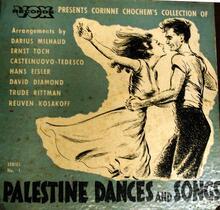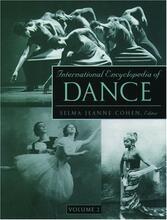Anna Halprin
American dance pioneer Anna Halprin.
Image courtesy of DLambertNJ.
Anna Halprin was one of the founders of the American avant-garde in modern dance. Beginning with her work in the late 1950s and early 1960s, she radically expanded ideas of what could constitute a dance, incorporating task and chance activity while also creating one of the first multiracial dance groups and incorporating the aged and terminally ill as subject and dancers in her works. Married to the distinguished landscape architect Lawrence Halprin, she often worked with him collaboratively, leading a series of exploratory workshops in the 1960s and 1970s that helped re-shape the course of experimentation in contemporary dance and landscape design btsituating dance in rural environments and making the choreography of public spaces an influential concept in urban design.
Anna Halprin was one of the founders of the American avant-garde in modern dance. Beginning with her work in the late 1950s and early 1960s, she radically expanded ideas of what could constitute a dance, incorporating task and chance activity while situating dance in rural and urban environments. In exploratory workshops on the outdoor dance deck in Marin, California, which her husband, Lawrence Halprin, built for her, she extended the limits of what material was permissible as content in a dance work, giving voice to forgotten segments of the population—people of color, the aged, the terminally ill.
Early Years
Anna (Schuman) Halprin was born July 13, 1920, in Wilmette, Illinois, to Ida (Schiff), daughter of Lithuanian immigrants, and Isadore Schuman, a native of Odessa, Russia. She was the youngest of three, with two older brothers. As her father, who had no education beyond elementary school, went from wholesaling women’s clothing to being a successful real estate entrepreneur, the family rose rapidly into upper-middle-class comfort. Anna’s mother, a housewife with a high school education, indulged her daughter in interpretive dance lessons as a child. Anna also enjoyed exposure to the arts through the model progressive education she received in elementary, middle, and high school in Winnetka, Illinois. By the time she entered the University of Wisconsin at Madison in 1937, she knew she wanted to be a dancer. At university, the fiery redheaded performer became the protégée of the chair of the dance program, the distinguished dance educator Margaret H’Doubler, and received her B.A. in 1942. It was at the University of Wisconsin that she met Lawrence Halprin, the son of Hadassah president Rose Halprin, a graduate student in biology who was to become a distinguished landscape architect and environmental designer. They were married on September 19, 1940.
Relocating to the West Coast
After a brief stint performing on Broadway with Doris Humphrey’s company, Halprin and her husband moved to San Francisco in 1945, where their daughters Daria (1948) and Rana (1951), were born. (Today Daria Halprin Khalighi is an expressive arts therapist and Rana Halprin is a Marriage and Family Therapist and photographer.) In San Francisco, Halprin, who created several of her early solos based on Jewish themes, founded first a dance studio with Welland Lathrop and then her own company, the San Francisco Dancers Workshop, with which she toured Europe to great acclaim in 1963 and 1965.
In response to the racial unrest of the 1960s, Halprin brought together a group of all-black and a group of all-white dancers in a collaborative performance, Ceremony of Us. She then formed the first multiracial dance company and increasingly focused on social justice themes. When she was diagnosed with cancer in the early 1970s, she used dance as part of her healing process and subsequently created innovative dance programs for cancer and AIDS patients. An early pioneer in the use of expressive arts for healing, she co-founded the Tamalpa Institute with her daughter Daria in 1978.
With Lawrence Halprin, Anna developed methods of generating collective creativity. During the late 1960s and early 70s, they led a series of workshops called “Experiments in the Environment,” bringing dancers, architects, and other artists together and exploring group creativity in relation to awareness of the environment. She served as a mentor to the leading postmodern dancers, including Meredith Monk, Trisha Brown, Yvonne Rainer, and Simone Forti. Through them and the other important artists who studied and worked with her, including Robert Morris, LaMonte Young, and Terry Riley, Halprin was an influential force in the Judson Dance Theatre, postmodern dance, and experimental performance of the twentieth century.
In 1982, Halprin began her annual performances of Circle the Earth: A Planetary Dance for Peace. As an outgrowth of her work with individuals with AIDS, she also founded two workshop groups for people diagnosed HIV-positive, one for men called Positive Motion and one for women called Women with Wings, as an outgrowth of her pioneering the use of expressive arts for healing. Across her 70-year career Halprin created more than 150 dance theater works, authored several books, and was the subject of more than a dozen videos and DVDs.
Distinctions and Legacy
Halprin’s many honors include the Doris Duke Impact Award and the Isadora Duncan Dance Award in 2014, as well as Guggenheim and Fulbright Fellowships, awards from Dance USA, American Dance Festival, Dance Magazine, and the California Arts Council and honorary doctorates from the University of Wisconsin, Santa Clara University, and SF Arts Institute. Her work has been featured in museum exhibitions internationally including Lyon’s Museum of Contemporary Art and San Francisco’s Yerba Buena Center for the Arts, University Art Museum Berkeley, MoMA, PS 1, Centre Pompidou, and ZKM Museum, among other venues.
The Museum of Performance & Design in San Francisco houses the Anna Halprin Digital Archive. Additional material is available in the Anna Halprin Papers at the Jerome Robbins Dance Division at the New York Public Library for the Performing Arts. Into her late 90s, Halprin continued teaching and creating work. Her legacy has been a vital force in redefining American modern dance as a contemporary ritual and a forum for the artist as a morally and socially engaged global citizen.
Halprin, Anna. Moving Toward Life: Five Decades of Transformational Dance. Edited by Rachel Kaplan Middletown, CT: Wesleyan University Press, 1995.
Halprin, Anna, and Rachel Kaplan. Making Dances That Matter: Resources for Community Creativity (Middletown, CT: Wesleyan University Press, 2019.
Ross, Janice. Anna Halprin: Experience as Dance. Berkeley: University of California Press, 2007.
Wittmann, Gabriele and Ursula Schorn and Ronit Land. Anna Halprin: Dance, Processes, Form. London: Jessica Kingsley Publishers, 2015.


